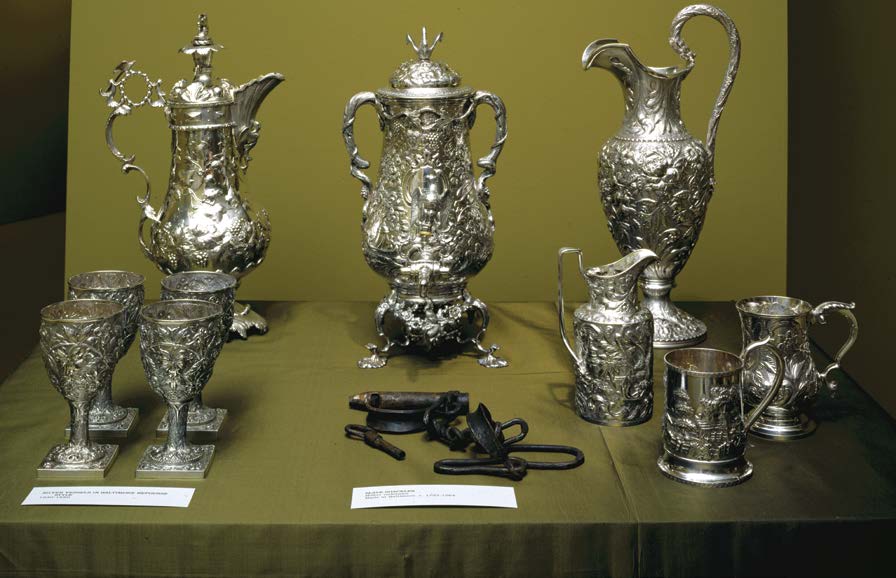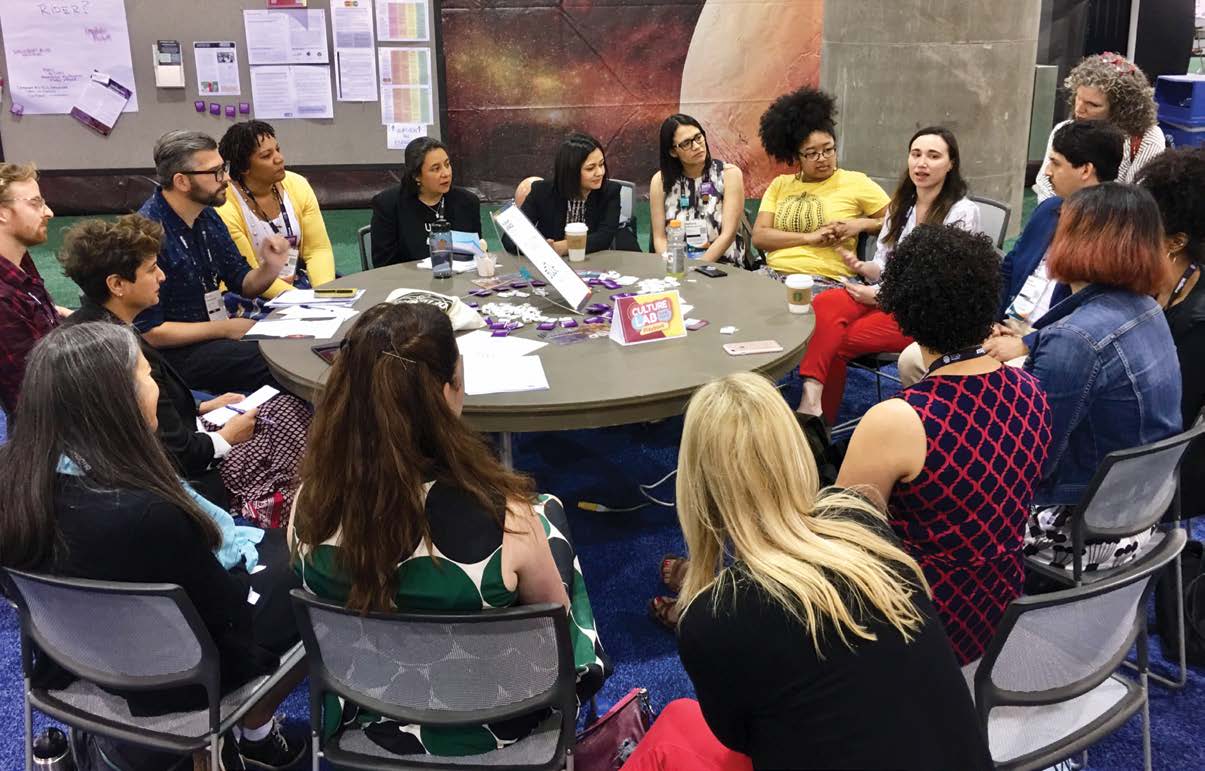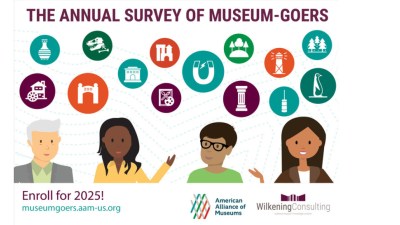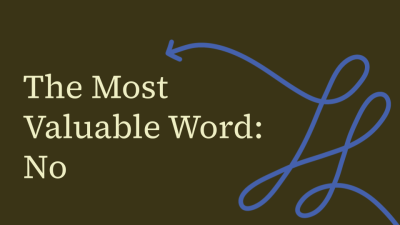
A conversation on the state of museum exhibitions and race.
This article originally appeared in the Summer 2020 issue of Museum magazine, a benefit of AAM membership.
In 2016, a group of 24 museum professionals came together in Chicago for a three-day convening on race and racism in museums. The idea for the convening—called Museums & Race: Transformation and Justice—grew out of a conversation about museum response to civil unrest in the wake of a fatal shooting of an African American man by a white police officer that occurred in Ferguson, Missouri. That conversation was hosted by some members of The Museum Group during the AAM Annual Meeting in April 2015.
Since then, the Museums & Race movement has expanded with an intentional mission of shining a light on the role that race and racism play in the museum industry—in both the obvious, visible ways and the smaller but sometimes more insidious, invisible ways. It also provides a space within a predominantly white field for those of us in the industry who don’t identify as white. Since that original gathering, Museums & Race has remained a progressive voice for change in the industry, hosting the Museums & Race Unconference at the 2016 AAM Annual Meeting and the Museums & Race Transformation and Justice Lounge at the AAM Annual Meeting since then.
Our aim here is to answer some common questions we see from colleagues and to frame the dialogue we want to continue in the museum field.
On DEAI Leadership:
“As a museum executive, I realize that I play a part in creating brave spaces at our museum. I am committed to initiating this dialogue within our museum, helping to institutionalize the practice of equity and inclusion and learning alongside my colleagues as we do this enduring work in our field. Be brave and creative as you broach each challenge with gratitude.”
What is the origin of “Is That Hung White?”
Joanne Jones-Rizzi (JJR): When I first entered the museum field in 1985, I was struck by the number of conversations we were having at the Boston Children’s Museum about attracting and being relevant to “new” audiences and marginalized communities. We had invited a group of community advisors who represented a number of groups we wanted to attract, and one of the advisors who was African descended commented that an exhibition in the museum was “hung white.” The phrase has stayed with me and remains relevant in light of how painfully slow change has been in the design and exhibition development sectors of our field.
Stacey Mann (SM): One of the consistent observations made by individuals engaged in these dialogues about museums and race is the absence of exhibit teams. Much of the work up until now has been led by education departments and visitor services staff—the individuals who see firsthand the impact of our design and content choices on the visitors we seek to engage. As conversations about decolonization have come to the fore, many curators and collection managers have started to wrestle with the complexities of how we tell different stories. When Joanne and I attended MASS Action a few years ago, we surveyed the room and noted the dearth of exhibition colleagues in attendance. The idea for an “Is That Hung White?” dialogue originated there.

What do you hope to highlight by bringing this question to the broader AAM community?
JJR: Our goal is to call out the glaring disparity within our field, and to call in the challenges experienced by those of us who are brown, black, POC, or indigenous. It’s important to acknowledge that there is a problem. People who are in positions of power within our field need to listen and respond by changing the systems currently in place to be more inclusive. This ongoing discussion is about acknowledging and affirming for museum staff who are brown, black, or indigenous, that as staff of color, there is no doorway through which we leave our professional identities behind at the close of a workday, nor do we leave our cultural and community identities behind when we enter the museum each workday.
SM: We want to emphasize the important role that exhibition teams (designers, developers, fabricators) have in not only deconstructing many of the problematic systems and structures that continue to stand in the way of meaningful change, but also in creating room to think differently about what kinds of spaces we create and who is welcomed there, both visitors and staff. Issues of race, representation, and inclusion manifest in so many different ways within the exhibition world that we can no longer afford to ignore that facet of the industry most responsible for the visual language of our public-facing spaces.
On Decolonization:
“Traditionally, the museum model uses a curator, or expert, to build content. We decided to utilize exhibit developers a few years ago but realized that we were still not engaging enough (or in ways that felt more than transactional) with our communities. When the opportunity came about to refresh our “Kumeyaay: Native Californians” exhibition, we knew that we could start to address the ways in which we previously had been exclusive in content building. We are still working on how to best go about this process, but for me personally, real, genuine listening to communities has been my starting place. Decolonizing initiatives have come to the forefront for our museum in all departments; our journey is ongoing and we have much to learn.”
What are some of the challenges you see for museums in tackling issues of representation and inclusion in the exhibition process?
SM: The obvious answer is addressing issues of implicit bias in how we approach exhibition planning and development—the language we use, the people we hire, the stories we tell, the design choices we make. In 2010, AAM’s Center for the Future of Museums published Demographic Transformation and the Future of Museums and before that, Museums & Society 2034 (2008) and Museums & Society 2019 (2009). Each of these reports draws attention to the shifting cultural landscape and the need for museums to get serious about building a more inclusive, and consequently sustainable, future. Generally speaking, I still see a lot of museums holding back, waiting for some cookie-cutter solution to present itself—a straightforward checklist that can be absorbed into an already overcrowded work plan. That’s not how it works. There is no silver bullet.
JJR: The landscape is changing within many cultural institutions. It’s a slow progression, but change is palpable and visible. Numerous institutions are adapting diversity, equity, accessibility, and inclusion (DEAI) initiatives and identifying leadership to make change. What is most disturbing to me is that talented, deeply engaged individuals are leaving our field. It’s disheartening to see these brilliant individuals leave out of frustration because there are few or no opportunities for growth or advancement in addition to ongoing, insidious, overt racism and overwhelming hostility. Institutions need to pay attention to this dangerous and harmful trend. Sustainability is a key aspect of DEAI work. Understanding the cultural shift that occurs with change from DEAI perspectives and its impact on staff who are not white is critical to the success of ongoing, committed change.

How can we support one another in our collective efforts to build competency and capacity for change across the museum exhibition landscape?
JRR: Take advantage of the outstanding work being done by colleagues (take advantage, but don’t take advantage—cite their contributions). The work that is happening across the field is exciting. There are numerous initiatives and efforts that involve people with design, content development, and fabricator roles. The approach with some of these groups has been to use a distributed leadership model that involves and supports collective decision-making and builds on the strengths of a collective. Such models provide ways for multiple voices and perspectives to be included in decision-making and can empower and elevate voices that have been silenced or rendered invisible. Develop and support opportunities within institutions that support growth, invest in professional development for staff, and provide opportunities for mentoring. (See the Resource Guide below.)
SM: We need to stop making excuses: “That’s not how we do things.” “That’s not their role.” “This is too disruptive.” Change is hard—anything worth doing usually is. It might feel disruptive or even a bit threatening. Don’t panic; that’s our “fight or flight” brain talking. It will argue every time for the path of least resistance and retreat. It’s the cultivated voice of white supremacy that has dictated our reflexive choices for so very long—but it’s within our power to change the way we choose to respond to it. This isn’t the work of one person or one department within an institution. It belongs to all of us.
On DEAI work:
“It took me years to shift the DEAI narrative from ‘me’ to ‘we.’ If we truly want to have impact and change these bias systems we work within, then DEAI work is everyone’s work, not just the person or team that holds the title but ALL.”
What comes next?
JJR: None of this is new. These conversations have been happening for decades. There are many voices in the field amplifying and taking action to draw attention to the themes of inclusion and representation. However, there is a comprehensive approach that in some ways was not always present. Emboldened disruptors are taking this work to a new level. There is an understanding and active work to not just focus on the audience, but connect audience attention and engagement to relevant content, and connect relevant content to whoever is developing and designing content. This is not to say that there are no historical models for this approach, but as a field this has not been our practice.
SM: There are a lot of conversations taking place, which is encouraging. More and more institutions are engaging in professional development and institutional assessments to look at their own professional practices. More foundations are earmarking funds to support DEAI initiatives. It remains to be seen if those efforts will result in cosmetic changes—easy to regress and fall back into old habits—or truly transformative changes that address the core institutional cultures that have kept us as we are for so long. We are going to experience growing pains as we continue to move through these issues and define solutions for each of our organizations. We will make mistakes. And we will need to continue the dialogue and make adjustments as we travel this road together.
Getting Started: A Resource Guide
This list is by no means exhaustive, but if you are looking to jumpstart conversations within your organization, we recommend beginning here.
- Museums & Race
A movement to challenge and reimagine institutional policies and systems that perpetuate oppression in museums. Spark a conversation with the Museums & Race report card. - MASS Action Toolkit
A compilation of theory, procedures, and best practices to create greater equity within the museum field as well as diagnostic tools to help organizations gauge their readiness for equity work. - Empathetic Museum
Maturity Model and diagnostic tools for organizational change across five dimensions: civic vision, institutional body language, community resonance, timeliness and sustainability, and performance measures. - Museum Hue
Resources and networking with a focus on community, culture, and careers for museum professionals of color. #MuseumHue - Museums Are Not Neutral
Global advocacy campaign aimed at exposing the myth of museum neutrality and calling for equity-based transformation across museums. #MuseumsAreNotNeutral - Incluseum
Advancing new ways of being a museum through critical dialogue, community building, and collaborative practice related to inclusion in museums. - AAM Facing Change Initiative
Framework, training, and resources for museum boards to build diverse and inclusive cultures within their organizations that better reflect and serve their communities.
Joanne Jones-Rizzi is vice president of science, equity, and education at the Science Museum of Minnesota in St. Paul, and Stacey Mann is an independent interpretive planner and exhibition developer based in Philadelphia. Special thanks to the authors’ colleagues, whose contributions have meant so much to this conversation: Nafisa Isa, Erika Katayama, Jaron Keener, Su Oh, Veronica Garcia-Luis, Marquette Folley, Elisabeth Callihan, and the entire Museums & Race network.








Thank you Joanne and Stacey for your work and for this helpful article.
Thank you so much for the great article. I’m curious if this movement has connected with that of the Native American Graves and Repatriation Movement that sought to reclaim the humanity of indigenous peoples in museums? This decolonization work is ongoing.